Manufacturing Molds
CNC surface grinding is a critical component of this shop's systematic approach in the manufacturing of multicavity molds to extremely high tolerances.
Share




The short story here is that a very good shop has made CNC surface grinding a staple of its mold making operation. That alone is probably news enough because so few toolmakers feel they can justify the investment it takes to put a CNC grinder on the shop floor.
But there's much more to it than just that. The core issue is that this shop makes plastic injection molds in a production environment, even though they still mostly build them one at a time. Long gone are the days when "handcrafted" was synonymous with quality. This is a factory where measurable and repeatable production control reigns, and they continuously look to weed out identifiable sources of process variability just as sure as if they were knocking out parts by the millions.
The shop is Tech Mold, Inc., in Tempe, Arizona. And the multicavity molds they manufacture serve some of the highest precision molding applications to be found anywhere in the world, which is a big part of the reason why CNC grinding makes so much sense here. Tech Mold often must deliver accuracies of two "tenths" (0.0002 inch) in their tools to deliver the molding process consistency that their customers demand. But there are other compelling benefits to CNC grinding as well. Here's how Tech Mold works with their CNC grinders, and how they make those machines work for their business.
Why CNC?
You can buy a first rate, medium size conventional surface grinder for about $35,000. A CNC grinder may cost three times as much. So how can a tool shop doing custom manufacturing justify CNC for the sake of flat grinding automation?
As Tech Mold's president Bill Kushmaul explains it, the issue is not so much to speed up the grinding process or reduce labor, though CNC does indeed have that net effect. The heart of the matter is that CNC allows Tech Mold to achieve an extremely high level of grinding process consistency—and at very finetolerances—that they simply wouldn't be able to achieve with manual grinding.
This consistency is critical to Tech Mold's demanding customers. The shop's stock in trade is producing extremely precise multicavity molds. Much of their work goes to packaging molders around the world that supply caps, bottles and applicators for a variety of consumer goods—products that are sold by the millions. These plastic parts are filled, sealed and/or assembled on extremely high speed machines which demand that machining-like tolerances come out of the molding process. A good example that Mr. Kushmaul cites is the bottle and safety cap for an over-the-counter pain reliever. To get the consistency necessary for these parts requires the molder to hold tolerances of 4 thousandths (0.004 inch) on some features of the bottle mold and 3 thousandths on the cap. And, he says, "they have to be able to produce millions of caps with no regrets." In this case, Tech Mold delivered tools that consistently held the final molding process to a Cpk of 2 or better. Another example is the tooling Tech Mold made for the plastic parts that go into a pump spray mechanism. Those parts are put together on an automated system that churns out in excess of 500 assemblies a minute. Maintaining dimensional consistency of those parts is critical, and extremely challenging for the toolmaker when he must deliver that consistency out of as many as 64 individual cavities.
According to Mr. Kushmaul, to consistently hold a thousandth on a plastic part means you have to hold a "tenth" in the mold. (It also means you have to know a heck of a lot about how to design plastic parts and their molding processes, but that's another story.) This is the kind of work that places Tech Mold among the world's very elite tool design and manufacturing enterprises.
So Tech Mold needs to maintain very high levels of precision in their metalworking processes in order to make their tools. That's why the shop became expert at precision sinker EDM, and today employs high speed machining for the fabrication of electrodes so that machine accuracies need not be affected by hand finishing. Moreover, Tech Mold is no stranger to CNC 3D grinding. Some time ago they figured out how to grind on machining centers, and now routinely plunge grind some parts on a Matsuura machine. They also have a full three-axis Moore jig grinder that's used for very precise 3D work.
Still, the need of CNC surface grinding is probably not so apparent in the minds of many toolmakers. You typically can't get at in-cavity features with a surface grinder, of course, which is one reason why CNC surface grinders came a little later to their overall manufacturing scenario. But there are plenty of external insert surfaces to be ground, particularly on the blocks that Tech Mold uses in most multiple-cavity tools. To hold precision inside the cores and cavities across the entire tool means that each individual block has to be precisely positioned and aligned within its seat. That requires the block's external surfaces to be as flat and square as possible as well as to be very accurately positioned relative to the core and cavity locations.
The wisdom of bringing CNC grinding to these critical flat features finally became clear one day when Mr. Kushmaul was talking with one of Tech Mold's most skilled grinding hands, who in a few words put it all in perspective. He said, "I've been in this business for 40 years and I'm still squaring up blocks. Bill, that's stupid." And as Mr. Kushmaul thought about it, he had to agree. Too much of a precious resource—machinist skill—was being consumed in one of its most basic operations simply because they weren't using the best tool for the job.
Moreover, those external insert surfaces are in many ways just as critical as the 3D features inside the cavity. At the very least, they are an integral component of the overall tolerancing structure of a precision tool. And the processes that generate those features are just as much a part of the overall manufacturing system for building a precision tool. If CNC was justified for all the shop's other machining operations, why not the flat features too?
So Tech Mold acquired their first CNC surface grinder in 1993 from Okamoto (Buffalo Grove, Illinois), and since have bought three more. Besides squaring blocks, the grinders are used to generate flat and form features on the tops of mold inserts to accuracies that were difficult to achieve with alternative processes. And true to the original idea, they are part of an integrated manufacturing system that spans a range of processes.
Location, Location, Location
Any agent worth his salt will tell you the three most important factors in real estate are location, location and location. They're pretty important in Bill Kushmaul's shop too—in electrode fabrication, in EDM and in the final grinding process. The critical point here is that once a location reference is established on a workpiece, don't lose hold of that reference until the part is complete, regardless of what process it goes through.
The platform on which that concept is applied at Tech Mold is an integrated tooling system from System 3R (Fairfield, New Jersey). Originally designed primarily for electrode fabrication, the system is essentially similar to a pallet system that would be used on a machining center. It includes a receiver that is permanently mounted on the machine tool and a holder that is affixed to the workpiece for the duration of its manufacturing cycle. In a typical electrode fabrication operation, receivers are mounted both on the table of a graphite milling machine and on the ram of a sinker EDM. This way, the electrode can be machined and then transferred to the EDM while still maintaining the initial location reference within the tooling system's repeatability range, which is about 50 millionths of an inch.
Tech Mold had been using this technology for years, so it was a natural extension to take the same approach in their insert block grinding operation. "The point," says Mr. Kushmaul, "is to lay down a foundation that is square, parallel and on center, and then all the rest of the process flows from there." And so Tech Mold "palletizes" the insert blocks from the start, before grinding, and then systematically builds up from that foundation. Interestingly, they first tried grinding the blocks and then mounting them on the tooling holders, thinking that the ground surfaces would certainly provide an adequate reference for downstream processes. And perhaps for most shops that would be adequate; at best they were locating within 3 "tenths."
But given the requirements of Tech Mold's work, they had to do better, and quickly found that starting the inserts out on holders delivered the best results. The tooling system is particularly important for the squaring operation because all four sides of the blocks are ground in a single cycle. This is accomplished by mounting a precision horizontal indexer on the table of the surface grinder, and mounting a receiver dead center on the indexer table. Then once the insert block is mounted on the holder—a process that requires no special level of precision—it is ready for grinding. Side one is ground, the block is indexed, then side two is ground, the block is indexed, and so on until all four sides are finished. With this process, the blocks are consistently parallel and square within a tenth.
But Tech Mold does a lot more with CNC surface grinding than just generate good rectangles. A number of different forms are ground to high precision, some of which can't really be done any other way. A good example are some of the compound angles in shut-off valves, but a variety of other features are generated as well. A few of those parts are pictured on the following pages.
Implementing Technology
While all of this talk of implementing CNC grinding sounds easy enough after the fact, it never looks that way on the front end. Moreover, the whole process of introducing new technology to the shop can be a painful experience for many companies. Breaking the habits of the old way of doing things is hard enough, let alone coming to master the new methodology.
Tech Mold's management recognizes the trauma that new technology can inflict on the shop environment, but continually pursues it nonetheless. More to the point, they go to great lengths to make new methods not just "embraceable" by shopfloor workers, but productive beyond all conventional standards for the technology. Or put another way, Mr. Kushmaul's maxim is that if a shop is merely using technology the way that everyone else does, it provides no strategic advantage. Anyone can buy the machines. Tech Mold must apply technology in ways that few other mold manufacturers can if the company is to maintain its competitive edge in today's mutable marketplace.
Figuring out how to grind on a machining center is but one example. In the case of introducing a whole new technology like CNC surface grinding, however, it takes a more concerted effort. Tech Mold's approach begins with the appointment of a "technology champion" whose job is first to research the new process, and then to figure out how best to implement it within the shop's general structure. Mark Paige was the "technology champion" for CNC surface grinding, and thus was instrumental both in selecting equipment and in working out the workholding arrangements as well as other critical components of the grinding process.
One of the biggest questions was how to handle NC programming. For the sake of flexibility, they wanted to be able to program on the shop floor, but didn't want to take an inordinate amount of operator time doing it. And considering that no one in the shop had ever programmed a grinder before, getting bogged down in G codes was a legitimate concern.
Mr. Paige resolved the issue by automating much of the programming through the use of parametric macro routines. Here's how it works: While the inserts for each mold are different from those of any other mold, there is a high degree of commonality among many of the features that must be ground. The shapes are similar; it's just the dimensions of those shapes that differ from job to job. For instance, all the insert blocks are rectangular in shape; it's only the specific length, width and depth that distinguish one from another. So what Mr. Paige has done is written a number of generic part programs (macros) to grind the common workpiece features. Then when it comes time to use the program, the operator just enters the specific dimensions of a feature and the program is automatically "sized" to the part (parametric). As Mr. Kushmaul puts it, to do programming, all the operator has to do is "put two pieces of information together and make it go."
Weeding Out Variability
The programming method is extremely efficient, but even more important, it's extremely reliable. In many ways it is emblematic of Tech Mold's whole approach to manufacturing: Systematize every redundant task you can so that it is always executed by the same methodology. That's the secret to consistently manufacturing to the highest quality standards. It's really no different than the approach taken by high volume producers, born in statistical process control, to identify all sources of variability in the manufacturing process and eliminate them wherever possible.
By Mr. Kushmaul's thinking, there are two major sources of variation in a machine shop—equipment and personnel. While Tech Mold's machinists are extremely good at what they do, trusting critical repetitive processes to hand skills is asking for more variation than they can afford. That's not to say that their best grinding hand can't often match the CNC machines if he takes the time. But it's extraordinarily difficult for anyone to deliver that level of performance day in and day out. Less skilled people don't have a chance.
With the CNC grinding process, however, not only can they consistently hold high tolerance levels, they can quantify the variability range so that they know beforehand what the process is and is not capable of doing all the time. To that end, Tech Mold takes inspection of their machine tools just as seriously as the inspection of their parts. They continuously monitor the output of critical processes to check for attributable sources of process variation, and laser calibrate the machines on a periodic basis. Those efforts also are joined by a disciplined and planned equipment maintenance regimen.
So what's the real story here? Perhaps it is this. Even in a custom manufacturing environment, encourage people to do what people do best—be knowledgeable, flexible, adaptable, innovative. Save what you want to be variable for the people, and leave the consistency to the machines.
Related Content
How to Mitigate Chatter to Boost Machining Rates
There are usually better solutions to chatter than just reducing the feed rate. Through vibration analysis, the chatter problem can be solved, enabling much higher metal removal rates, better quality and longer tool life.
Read MoreHow to Successfully Adopt Five-Axis Machining
While there are many changes to adopt when moving to five-axis, they all compliment the overall goal of better parts through less operations.
Read MoreQuick-Change Tool Heads Reduce Setup on Swiss-Type Turning Centers
This new quick-change tooling system enables shops to get more production from their Swiss turning centers through reduced tool setup time and matches the performance of a solid tool.
Read MoreInside a CNC-Machined Gothic Monastery in Wyoming
An inside look into the Carmelite Monks of Wyoming, who are combining centuries-old Gothic architectural principles with modern CNC machining to build a monastery in the mountains of Wyoming.
Read MoreRead Next
5 Rules of Thumb for Buying CNC Machine Tools
Use these tips to carefully plan your machine tool purchases and to avoid regretting your decision later.
Read MoreRegistration Now Open for the Precision Machining Technology Show (PMTS) 2025
The precision machining industry’s premier event returns to Cleveland, OH, April 1-3.
Read MoreSetting Up the Building Blocks for a Digital Factory
Woodward Inc. spent over a year developing an API to connect machines to its digital factory. Caron Engineering’s MiConnect has cut most of this process while also granting the shop greater access to machine information.
Read More













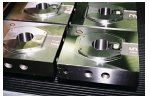
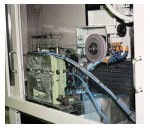
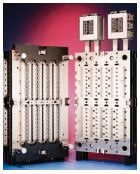
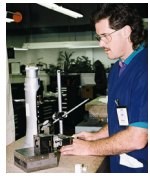
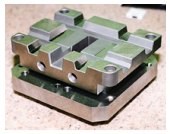











.jpg;maxWidth=300;quality=90)







